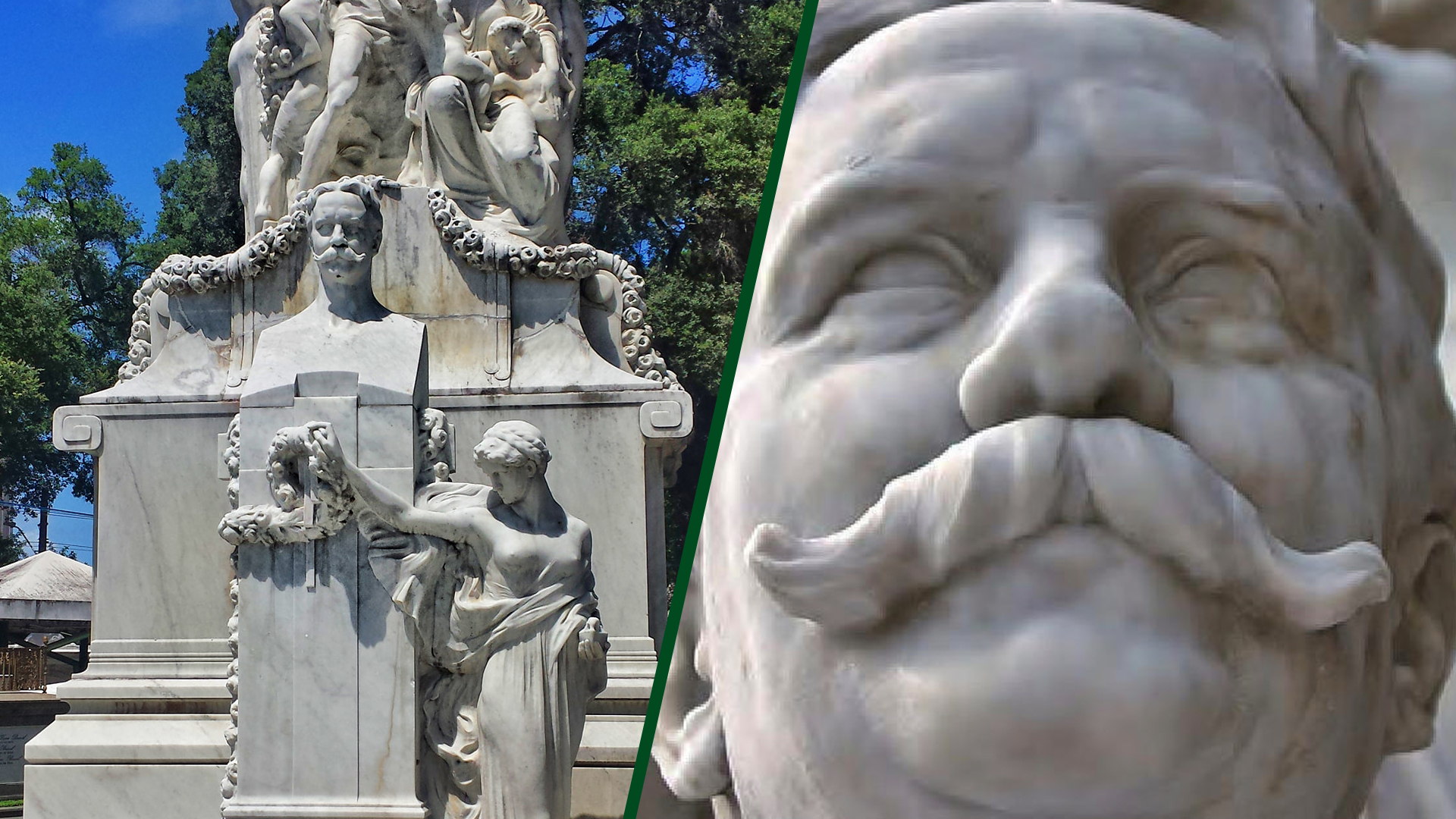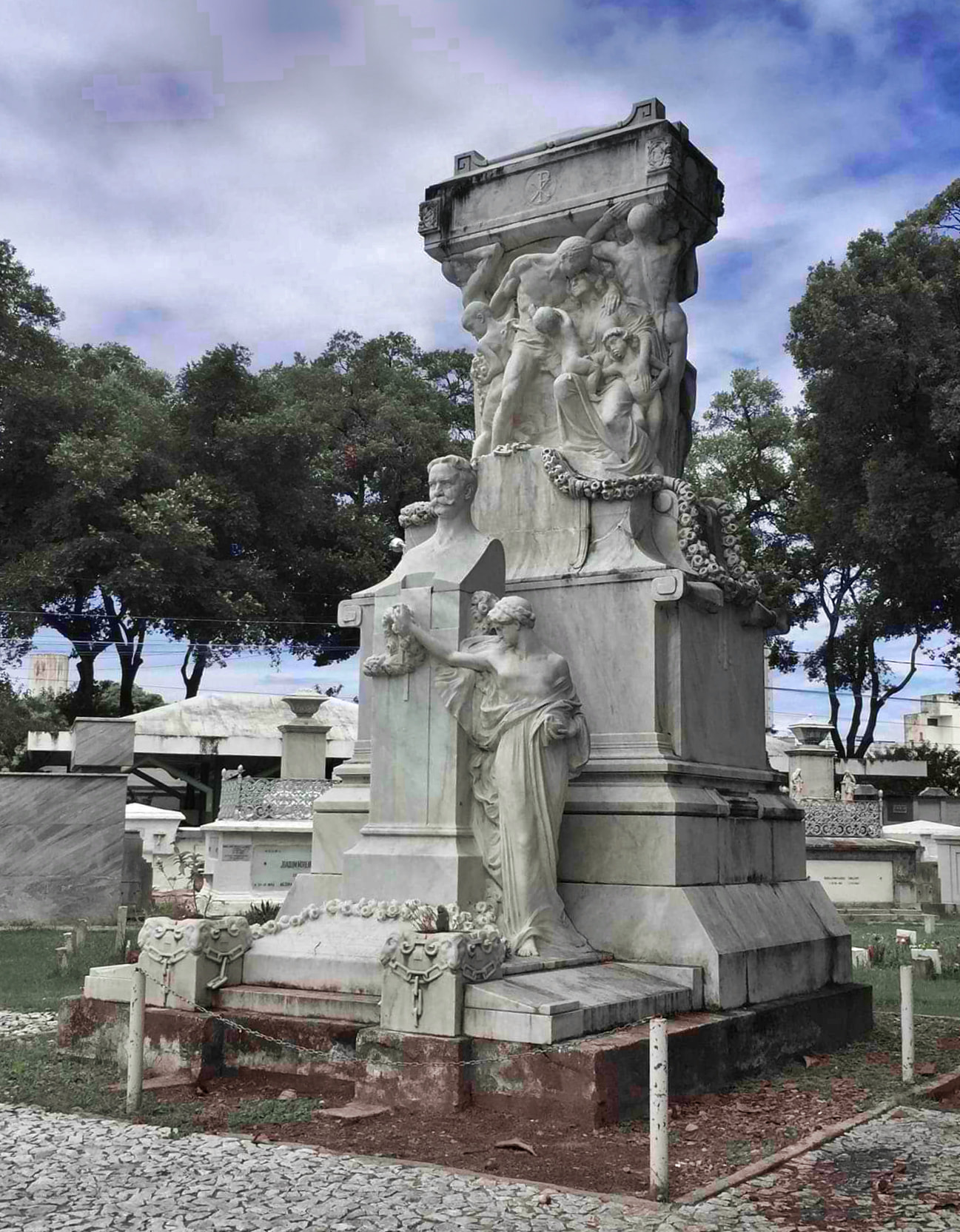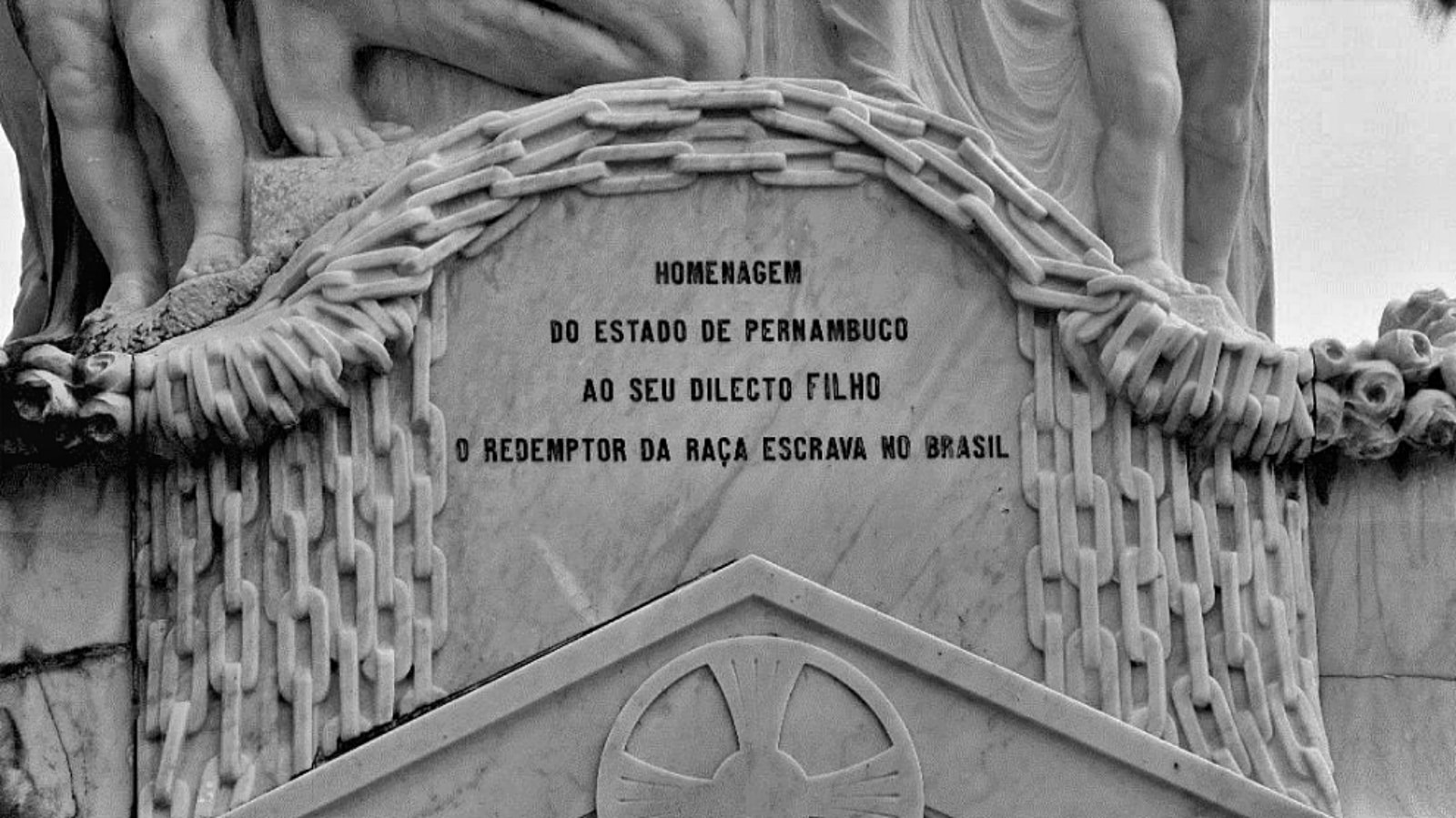The Nabuco Chapel Mausoleum was the work of Italian sculptor Giovanni Nicolini, inaugurated in 1914, commissioned by the Government of Pernambuco. It features a visual narrative, depicting half-naked men, women, and children theatrically portraying the effort made to raise the coffin of the one who was the “redeemer of the enslaved race in Brazil,” as stated in the text above the chapel door.

From another perspective, Nabuco’s sculptural ensemble can be analyzed as a celebratory or civic-celebratory monument type, as it serves a dual purpose: it serves as a burial place and celebrates the memory of the prominent figure in the political, social, and cultural world.

Joaquim Aurélio Barreto Nabuco de Araújo was a Brazilian politician, diplomat, historian, jurist, orator, and journalist educated at the Faculty of Law in Recife. He was one of the main leaders of the abolitionist movement, attributing slavery as responsible for a significant portion of the problems faced by Brazilian society, advocating for the suppression of slave labor before any political changes.
The abolition of slavery, however, should not be done in a disruptive or violent manner but based on a national awareness of the benefits it would bring to Brazilian society. He campaigned against slavery in the Chamber of Deputies in 1878 (was not reelected in 1882) and in subsequent legislatures, where he led the abolitionist bloc in the House and founded the Brazilian Antislavery Society.

In early 1888, during the peak of the abolitionist campaign, Joaquim Nabuco traveled to Rome, seeking an audience with Pope Leo XIII, asking the Holy Pontiff for a declaration in the Brazilian press supporting the abolitionist campaign. The Pope expressed his sympathy and interest, declaring the Catholic Church’s support for the anti-slavery campaign. Nabuco’s audacity impressed everyone in Brazil, especially Princess Isabel.

After the overthrow of the Brazilian monarchy, Nabuco withdrew from public life for some time. Later, he served as an ambassador to the United States until his death in 1910, where he became a great promoter of Camões’ Lusiads. Nabuco was one of the founders of the Brazilian Academy of Letters, holding the seat patronized by Maciel Monteiro. Among the immortals, he maintained a close friendship with the writer Machado de Assis.

Matheus Araújo
Matheus Araújo is the founder and editor of Brazilian History. Born in Rio de Janeiro and holding a degree in Advertising and Marketing, his passion for history led him to enroll at the Federal University of the State of Rio de Janeiro, where he is currently pursuing a degree in History Education.
